Cost and benefit analysis of okra planting!
It is a professional agricultural technology comprehensive service platform specially for fruit and vegetable planting base, agricultural cooperative, sightseeing garden planting, farmers, agricultural material dealers and so on.
Okra is an annual herb of the genus okra of Malvaceae. English name: okra. Aliases: chili peppers, kidney-tonifying vegetables, etc. It is not only a nutritious healthy vegetable (tonifying kidney, stomach, clearing fire, losing weight, etc.), but also a greening and beautifying material with high ornamental value. it is a kind of vegetable, medicine and flower plant, and its development prospect is very broad. Its pods are crisp, tender and juicy, smooth and non-greasy, with a unique flavor, which is favored by the common people. At present, okra has become a popular high-end nutrition and health vegetable all over the world, and many countries have become the first choice for athletes to eat, and it is the best health food for the elderly.
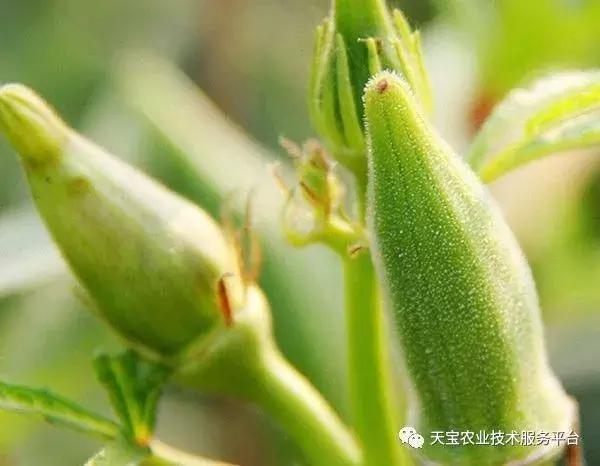
Development prospects of okra:
1. Industrial production is exported abroad as a variety of vegetables. Selecting suitable varieties for industrial production and selling and exporting fresh fruits of okra in the form of vegetables can bring considerable economic benefits.
2. Functional production, research and development of its health care function, sales of health products. Okra can promote gastrointestinal peristalsis, prevent constipation, enhance human endurance, prevent cardiovascular disease, improve immunity and other health functions. It can be sold as health products for athletes and the elderly, and can also be developed as weight loss products.
3. Development and utilization in leisure agriculture. Combined with the form of eco-tourism, picking garden and original ecological restaurant sales, to form an integrated ecological model of production, picking, processing, sales and service.
(1) ornamental: okra stem erect, plant height generally 1.5-2m, flowers large and gorgeous, node flowering, petal base purplish red, Corolla light yellow; capsule hornlike, angled. The whole plant is handsome and straight, and can be cultivated as a courtyard greening.
(2) Edible: the tender pods of okra are tender and smooth, without peeling or pulling out seeds, and the whole fruit can be eaten. It can be fried, cooked, salad, soup, hot pot rinsed, barbecue, etc., and can also be used as kimchi and canned vegetables. Therefore, fresh fruit can be sold as a delicacy on the table in ecological restaurants in leisure agriculture.
(3) to provide ecological picking services to enable people to better accept and understand okra.
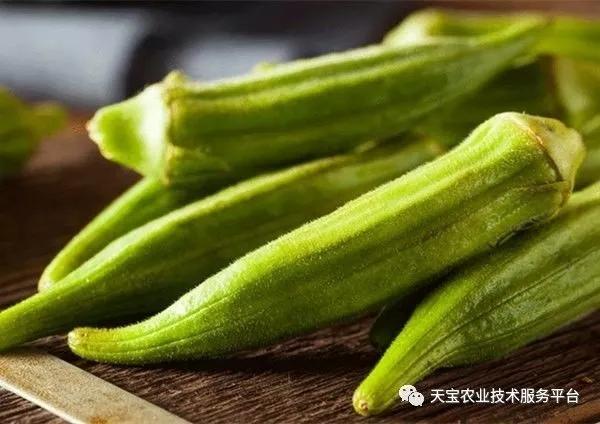
4. Green gifts: make fresh fruits into tea bags; the nutritional composition of flowers is similar to that of tender pods, flowers make scented tea, beautifully packaged and sold as green gifts.
5. When mixed with ordinary tea, it can complement each other in taste and nutritional value.
6. Oil production: sunflower oil is produced from seeds of old fruit; according to some scholars, it is found that the amino acid composition of okra protein is similar to that of soybean, and the per value is higher than that of soybean protein. At present, okra seeds have been used as raw materials for oils and proteins in the United States.
7. Coffee production: the caffeine content of okra seeds reaches about 1%. The mature seeds are fried and ground into powder, which can be used as an additive or instead of coffee to drink.
8. Research and development of cosmetics: it plays a certain role and significance in protecting skin, preventing ultraviolet radiation, treating wounds and beauty; using okra seeds to extract flavonoids and vitamins, using okra as raw materials, research and development of pure plant green cosmetics.
9. Benefit analysis: okra is properly managed with an output of at least 2000 jin per mu, and the general market price of supermarkets and hotels is 10-15 yuan per jin. And large wholesale is at least about 5 yuan, we compromise 8 yuan per jin, then each mu can be sold for about 16000 yuan, excluding seeds, fertilizers, pesticides, management, land rent, each mu can also make a profit of nearly 10,000 yuan. Let's see how okra is planted.

I. Variety selection
1. The color and flesh quality of pods can be divided into turquoise and fuchsia from the point of view of fruit color. At present, the turquoise pods on the market have better meat quality and are favored by consumers, while the purplish red pods are poor and should not be selected.
2. Plant height
① dwarf species: the plant height is about 1m, there are many lateral branches, both the main branch and lateral branch can bloom; the pod is early, the pod is dark green, the pod is sharp, the mature pod length can reach 20cm, has five edges, and the cross section is pentagonal; the varieties are evergreen, Qingfu, Wufu and so on, which can be selected.
② medium culm species: plant height is about 1.5m-1.8m, fruit cross-section is pentagonal, mostly dark green; varieties are Kaliba, Green Arrow, Beautiful Wujiao, Green Wuxing and so on.
③ tall species: the plant height is about 2m, the lateral branches are few, the fruit pods are green, the fruit cross section is five-angled or octagonal, and the varieties are Perkins large long horn, big stalk, etc., which can be selected.
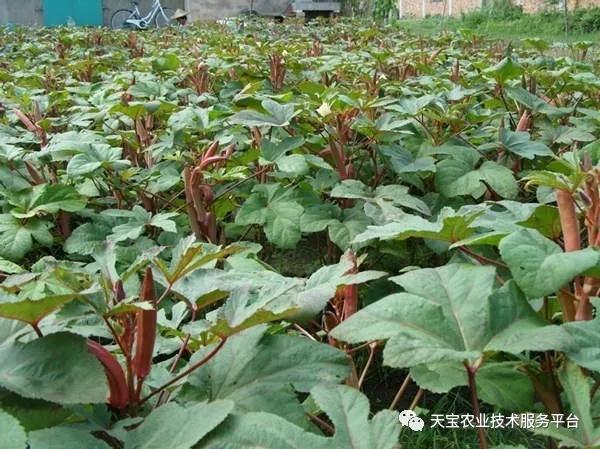
II. Land selection, land preparation and fertilization
1. Select suitable plots: okra is a short-day plant with strong heat tolerance and strong light, so it is necessary to choose areas with sufficient ventilation and light; deep taproot, developed lateral roots, strong ability to absorb fertilizer and water, loam or sandy loam with deep soil layer, loose and fertile soil and rich organic matter; drought and humidity tolerance, but not waterlogging tolerance, slightly stagnant water, that is, leaf yellow root rot, planting land needs low groundwater level and good drainage. It is not suitable for continuous cropping, avoid acidic soil, the soil pH value should be 6-6.8; the previous stubble had better be a vegetable garden, cotton stubble should not be planted, nor should continuous cropping. (note: okra stalks had better be crushed and returned to the field in order to facilitate the return of some nutrient elements to the land.
2. Apply sufficient organic base fertilizer: apply more than fully mature livestock and poultry manure 2000kg per mu, spread the ground before soil preparation in spring, then turn it into the soil, rake and mix it well, so that the soil and fertilizer can be fully mixed, which can not only improve the fertility, but also improve the soil to meet the needs of its growth and development (Note: okra is different from legume crops, root nodule bacteria are not found, so interplanting soybean can be considered).
3. Deep ploughing and frozen ridges in autumn and winter: the plots ready to plant okra should be ploughed in time after the previous harvest, and the depth of ploughing should reach more than 25cm, and then fully exposed and frozen ridges should be used to deepen the ripe soil layer, further loosen the soil and enhance the ability of soil to store water and preserve fertilizer.
4. Opening ditches to make beds: soil preparation before spring planting is required to be fine, flat, loose, soft, deficiency on the top and solid on the bottom. On this basis, ditches will be opened to make beds. It is generally required that the width of the border is 170cm, the width of the furrow is 50cm, the border and ditch are added together, the area is 220cm, and the depth of the furrow is about 20cm. In this way, it is beneficial to the wide and narrow row planting and management of okra, and to ensure that the drainage is smooth, the field does not accumulate water, and the seedlings are not stained.
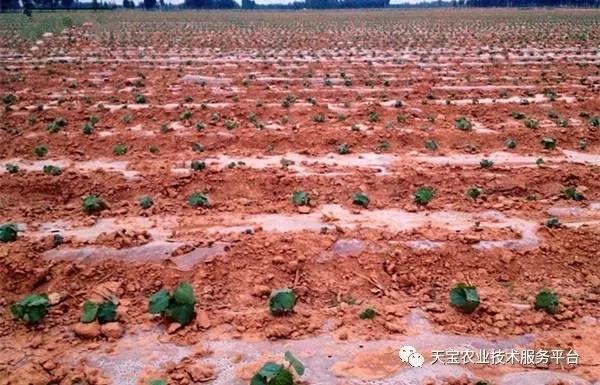
Seed direct seeding, seedling raising and transplanting
1. Seed direct seeding: okra can be broadcast directly, and spring sowing is generally the best. Because the suitable temperature for seed germination, plant growth and development and pod setting is 22-35 ℃, it is not suitable for sowing too early, and it is generally better for direct seeding when the ground temperature is more than 16 ℃ (note: low temperature sowing is easy to cause rotten seeds). The temperature in the south is higher in spring and can be broadcast directly after February; in the north, the temperature is low, and the suitable sowing time should be in the early and middle of May; sowing in the middle and lower reaches of the Yangtze River in early April, and sowing in the coastal areas of Jiangsu and Zhejiang in late April (specifically according to the annual temperature change). It can also be raised and transplanted. If the seedlings can be raised in the greenhouse and planted in the field, the whole seedling can be evenly distributed, and its growth period can be prolonged, which is conducive to high yield and high quality.
2. The time of raising seedlings in the greenhouse: 20-30 days earlier than the direct seeding in the field.
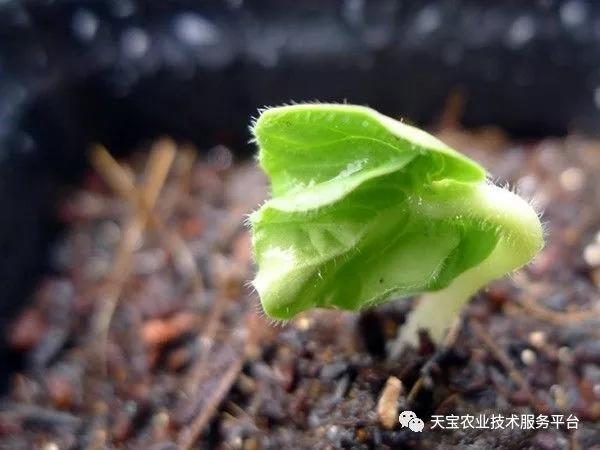
3. The method of raising seedlings: first of all, the seeds should be soaked to promote budding. Soak the seeds in warm water for 24 hours, then wrap them in cloth, put them under 25-30 ℃ to promote germination, about 75% white before sowing. It can be sowed in the greenhouse seedling bed (20kg N, P, K ternary compound fertilizer should be sprinkled per mu, fine and leveled to make a small low border in the north-south direction, the width of the border is about 1 m, the ridge height is 4-6cm, the border surface is high in the north and low in the south, and the drop 10cm is low in order to facilitate daylighting), the seeds per mu is about 0.5kg, and the fine soil is covered with 1-1.5cm after sowing. It is better to raise seedlings with plastic bowls, seedling trays or nutrition bowls and bags in the shed. (note: sunflower seeds and buds are afraid of being soaked in water for a long time and are perishable.)
4. Reasonable close planting: the practice of planting in a large area has proved that the yield of 4000-6000 plants per mu is the highest. Row spacing is 40cm, plant spacing 15cm, (dwarf species should be slightly dense, tall species can be sparse).
5. Transplanting techniques: the key technology when planting is transplanting with soil (very important, cotton is similar, very afraid of injuring roots), and its roots should be protected as much as possible. That is to say, when raising seedlings in a seedling bed, they should take more protective soil; for those raising seedlings in pots, bowls and nutrition bags, keep the soil in bowls, pots and bags from being scattered. Seedling age should not be too long, seedlings should not be too large, seedling age 25 days, seedling 2-3 leaves are better; pay attention to the selection of large and small strong seedlings, get rid of thin seedlings; to pour thoroughly fixed root water, in order to survive.
6. Interplanting and intercropping: scientific intercropping can be carried out by making use of the differences in morphology and characteristics between okra, strawberry and Chinese cabbage. Still take the above-mentioned 170cm border wide and narrow row planting 4 rows of okra as an example, we should apply sufficient organic base fertilizer and make the bed in advance, plant 2 rows of strawberries in the big row of okra in the first year, plant Chinese cabbage in time in the position of planting okra, and plant okra after Chinese cabbage harvest; when okra grows up, its luxuriant branches and leaves can cover part of the sunlight and create a superior ecological environment for strawberries in summer. In this way, the benefit of changing one ripe to three ripe is quite good. Note: ① strawberries tend to overlap with Chinese cabbage in the southern season. ② is also a good choice for fertilizer efficiency, soybeans and so on. )
IV. Strengthening field management
1. Skillfully applying topdressing: the growth period of okra is long, and the harvest time of its tender fruit can be as long as 100 days. Therefore, in addition to applying sufficient base fertilizer before planting, topdressing should also be applied in time. That is to say, after transplanting live trees, the seedling fertilizer should be applied once, with a Jiamei dividend of 400g per mu, and the clear water 400kg should be poured into the tree. After entering the flowering stage, apply flower-promoting fertilizer once, use Jiamei to make a profit of 10-15kg and water 1200kg per mu, and pour it between the rows. After entering the fruit harvest period, the strong fruit fertilizer was applied 1-2 times, and the profit was about 15-20kg and water 1500kg per mu, and poured between the rows. In addition, when entering the flowering and fruit picking period, 800 times liquid Jiamenao platinum can be sprayed on the front and back of the leaves and wet to the leaves after 4: 00 p. M. on cloudy or sunny days. In addition, the soil in the south is generally lack of boron, so we should also pay attention to increasing the application of boron fertilizer or spraying Jiamei gold boron on the leaves.
2. Drought prevention and stain removal: although okra is a drought-tolerant and moisture-tolerant plant, it is necessary to prevent drought and remove stains in high-yield and high-efficiency cultivation. Therefore, attention should be paid to keeping the soil moist, especially during the peak harvest period and during high temperature and drought, and if drought is found, it must be watered in time to improve the yield and quality of young fruits; for fear of waterlogging in the seedling stage, we should pay attention to waterlogging prevention, especially in the rainy season, but also to clear ditch drainage, so that during the whole growth period, it is neither soiled nor droughty, always strong and not premature senility.
3.Intertillage weeding: after topdressing, watering or rainy days, ploughing and weeding should be done in time to prevent soil consolidation, and root cultivation should be carried out in combination with intertillage and ditch cleaning, so as to facilitate root elongation, make plant growth strong and prevent lodging. Ploughing, weeding, soil cultivation, etc., can be terminated after ridge closure.
4. Pruning and picking leaves: there will be a lot of lateral buds in the lower part of okra seedlings (especially dwarf species). For those with dense planting and prosperous seedlings, too many lateral branches will affect fruit setting, so lateral buds should be erased in time so as not to consume nutrients and improve ventilation and light transmittance in the field; if the seedlings are sparse, only some weak branches need to be cut off, leaving stout branches to increase fruiting branches. After entering the full fruit stage, the leaf emergence of the plant is accelerated, and the ineffective old and residual leaves should be removed in time to facilitate ventilation and light transmission. Okra has deep roots and stable plants, and generally there is no lodging problem; but in the south, after the beginning of summer, rainstorms and typhoons are frequent, and there is also the danger of lodging and breaking, so wooden sticks or bamboo poles should be inserted to tie up with the main stalks to prevent losses.
5. pest control: okra has strong resistance and few diseases and insect pests; its leaves and petioles have hard hairs and can reduce the damage of diseases and insect pests; in the cultivation of new vegetable areas, diseases and insect pests are rarely found. However, attention should be paid to "prevention first, comprehensive control", and agricultural, biological, physical and ecological control methods should be adopted to control the occurrence of diseases and insect pests. When it is really necessary to use chemical pesticides, they should be scientific and reasonable to ensure that the pesticide residues in their products are lower than the national standards and have no pollution to the ecological environment.
V. Scientific harvesting
Okra plant height is about 30-50cm, or true leaves 7-8 will blossom and bear pods, and then will blossom and bear pods one after another as long as there is plenty of sunshine. Its harvest time is long, usually 60-100 days.
1. Harvest standard: the general requirement is that the tender fruit should be tough, green and bright, and the seeds begin to expand but there are no signs of aging. When the temperature is high, the pod length is 7-10cm and the transverse diameter is 1.7 cm. When the temperature is low, the pod length is 7-9cm and the transverse diameter is 1.7cm. The tender pods for processing are 6-7cm in length, grade An in transverse diameter 1.5cm, grade B in length 8-9cm and about 1.7cm in transverse diameter, and grade B in pod length above 10cm. Pod length should not exceed 10cm, whether fresh or used for processing. (note: for reference only, it is actually related to climate, fertility and varieties.)
2. Harvest time: it should be harvested within 3-7 days after flower fade. (note: it is proportional to temperature, high temperature.
The weather is usually not suitable for about three days. When the temperature is high, the young pods grow fast and need to be harvested every day or every other day; when the temperature is low, they are harvested once every 2-3 days. It is best to cut every morning, so that the young fruit looks more fresh and tender. 3. Harvesting methods: harvesting personnel should wear trousers and long-sleeved shirts and gloves to prevent tingling of hands and legs; cut them off from the handle with scissors and do not tear them with their hands to prevent damage to the plant; pay attention to clean cutting, do not miss cutting, such as missed or late harvest, not only old fruit, poor quality, affect food and processing, but also affect the growth and development of other young pods. Immediately after harvest, it should be sent to the processing plant to be frozen or sold in the market immediately, the young pods overnight will be quickly Lignified, and the appearance and quality will be affected.
4. Postharvest preservation: the respiration of young pods is strong, and it is easy to turn yellow and grow old after harvest. If it cannot be eaten or processed in time, attention should be paid to keeping it fresh. Put the young pods in a plastic bag, cool them in 4-5 ℃ cold water for 10 minutes, then store them in 7-10 ℃, keep 95% relative humidity and keep them fresh for 7-10 days. Young fruits sold far away from other places must be cut off in the morning, packed in fresh-keeping bags or plastic boxes, then gently put into cartons or wooden boxes, and sent to 0-5 ℃ cold storage for transportation as soon as possible. If the young pod darkens, softens and turns yellow, it should be dealt with immediately and can no longer be stored.
This article is edited by the technical team of Cathay Pacific Camry.
Reference:
"what are the prospects for okra cultivation? Do you make money by planting now? Heilongjiang Economic Daily
"okra high-yield planting techniques" okra information network
"cost and benefit Analysis of okra planting" Immortal Agriculture in Hunan
Editors of this issue: Guo Jiawei and Chen Fang
- Prev
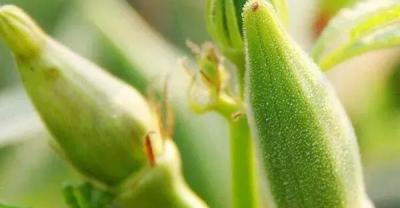
Planting techniques for high quality and high yield of pea
Pea is not only a land crop, but also an important raw material for food processing. With the increasing demand for pea processing in Gansu Yinhe Group, it will drive the local organic crop.
- Next
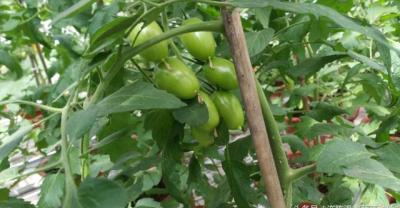
Ecological agriculture-the balcony planting method of asparagus!
First, the planting season: April to August (can be planted in spring and summer, grow vigorously in high temperature in summer, and can be planted in autumn, but it is easy to blossom). Second, raising seedlings.
Related
- Fuxing push coffee new agricultural production and marketing class: lack of small-scale processing plants
- Jujube rice field leisure farm deep ploughing Yilan for five years to create a space for organic food and play
- Nongyu Farm-A trial of organic papaya for brave women with advanced technology
- Four points for attention in the prevention and control of diseases and insect pests of edible fungi
- How to add nutrient solution to Edible Fungi
- Is there any good way to control edible fungus mites?
- Open Inoculation Technology of Edible Fungi
- Is there any clever way to use fertilizer for edible fungus in winter?
- What agents are used to kill the pathogens of edible fungi in the mushroom shed?
- Rapid drying of Edible Fungi

